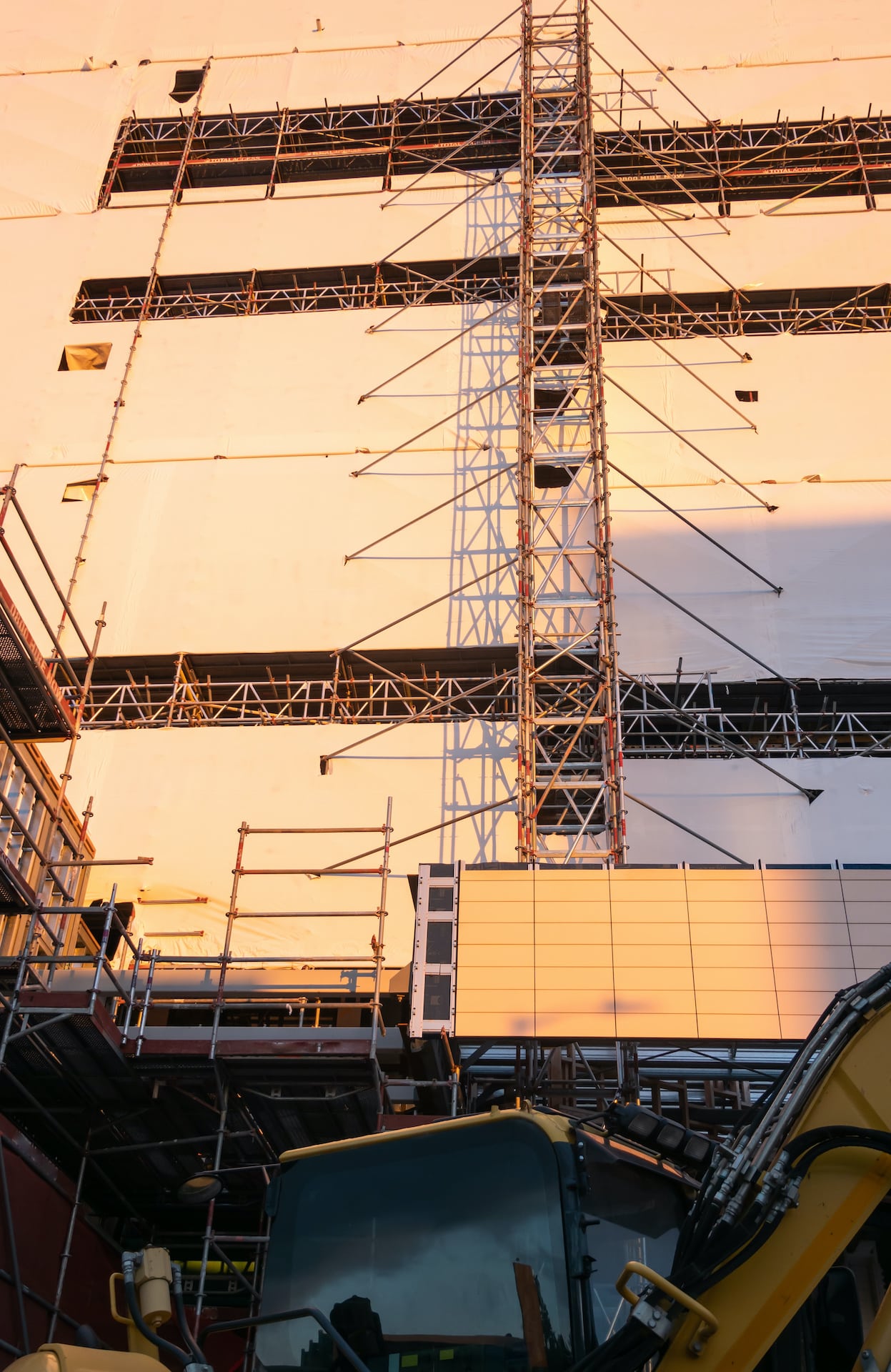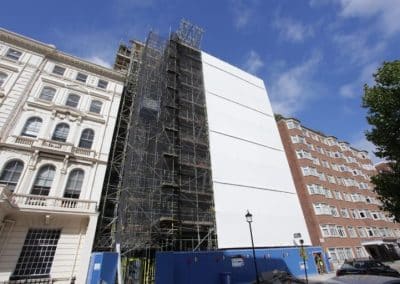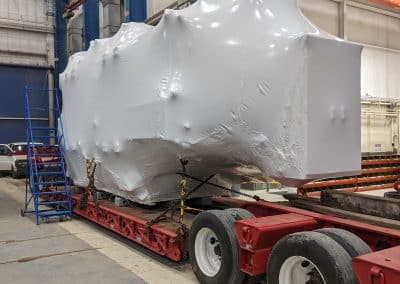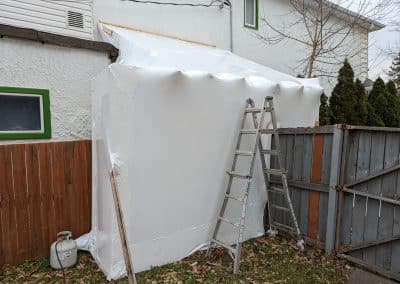Building Remediation
Shrink wrapping a building is a highly effective and versatile solution that ensures protection from the elements and a better alternative to tarps.
Protecting delicate structures
Shrink wrapping, often made of durable polyethylene plastic, forms a tight seal around the machinery or asset, completely enclosing them for maximum protection. This innovative method provides an impermeable barrier against external elements such as moisture, dust, UV rays, and even chemical reactions. The flexibility of shrink wrap allows it to conform to any shape or size of the object being contained, ensuring a secure fit without compromising safety measures.
Applications

Shrink wrapping for building remediation has revolutionized the construction industry by providing a versatile and efficient solution for protecting an exposed building during restoration or remediation. While working on historical structures, some pieces can become delicate during the restoration, which shrink wrapping can enclose the work area, shielding it from the outside elements. And also providing the workforce a clean and undisturbed area to work in.
This innovative technique involves enveloping the scaffold or face of the building with a customized, heavy-duty plastic film that tightly adheres to its contours when heated. Creating an impermeable barrier around the structure. This shrink wrap acts as a second skin, shielding it from rain, snow, wind, and sun damage while maintaining optimal working conditions within.
Examples of scaffolding shrink wrapping
- Historical building remediation
- Delicate structure restoration
- Renovation projects
- Provide year-round exterior work area
Benefits
Whether it’s scaffolding encapsulation during exterior repairs or enclosing entire structures undergoing extensive renovations. Its lightweight nature reduces installation time significantly compared to traditional methods while maintaining durability and longevity throughout the project duration.
With its ability to conform tightly to any structure, shrink wrap creates an impermeable barrier that protects the building from external elements such as rain, snow, wind, and UV rays. This not only prevents further damage but also accelerates the remediation process by providing a controlled environment conducive to efficient work. Additionally, shrink wrapping acts as a containment system for hazardous materials like asbestos or lead paint during abatement procedures.
Key benefits of shrink wrapping
- Cost-effective
- Easy installation
- Adheres to any shape and size
- Weatherproof
- UV resistant
- Visually appealing
- Tight seal against structure
- Prevents debris from falling
- Dust control




